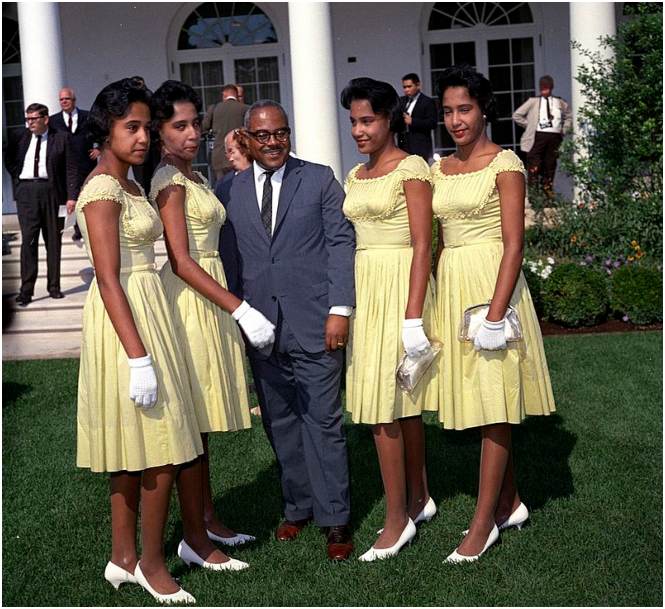The story of the Fultz sisters is a saddening chapter in American history, highlighting both the marvel of their unique birth and the subsequent exploitation they endured.
Born on May 23, 1946, in Reidsville, North Carolina, Mary Louise, Mary Ann, Mary Alice, and Mary Catherine Fultz were the first recorded identical African American quadruplets.

Their arrival garnered national attention, but beneath the surface lay a narrative of manipulation and racial injustice.
Delivered by Dr. Fred Klenner at Annie Penn Hospital, the sisters were born to sharecropper parents Pete and Annie Mae Fultz. Annie Mae, who was deaf and mute, and her husband, who was illiterate, found themselves at the mercy of Dr. Klenner’s decisions.
He named the girls after female members of his own family, assigning them all the first name “Mary” followed by different middle names. This act of naming was not just a personal imposition but also a reflection of the broader societal dynamics that stripped Black individuals of agency over their own lives.

Dr. Klenner’s involvement did not end there. He negotiated a deal with the Pet Milk Company, aiming to market their formula to Black families.
The Fultz sisters became the faces of this campaign, appearing in advertisements and promotional events across the country. In return, Pet Milk provided the family with a new home, land, and a full-time nurse. However, this arrangement came at a significant cost: the sisters were taken off breast milk and fed Pet Milk formula exclusively, turning them into living endorsements for the product.
Throughout their childhood, the sisters were paraded before the public, their lives commodified for corporate gain. They met prominent figures, including Presidents Truman and Kennedy, tennis champion Althea Gibson, and boxer Floyd Patterson.
Despite these high-profile encounters, their personal aspirations were often overshadowed by the roles imposed upon them. They attended Bethune-Cookman College on music scholarships but left after two years, eventually working as nurse’s aides.

Tragically, three of the sisters—Mary Louise, Mary Ann, and Mary Alice—died from breast cancer between 1991 and 2001. Mary Catherine, the last surviving sister, passed away in 2018 at the age of 72.
The exploitation of the Fultz sisters is a stark reminder of the intersection of race, gender, and commerce.
Their story demonstrates, in no uncertain terms, the importance of advocating for the rights and dignity of Black women, ensuring that history does not repeat such injustices.
